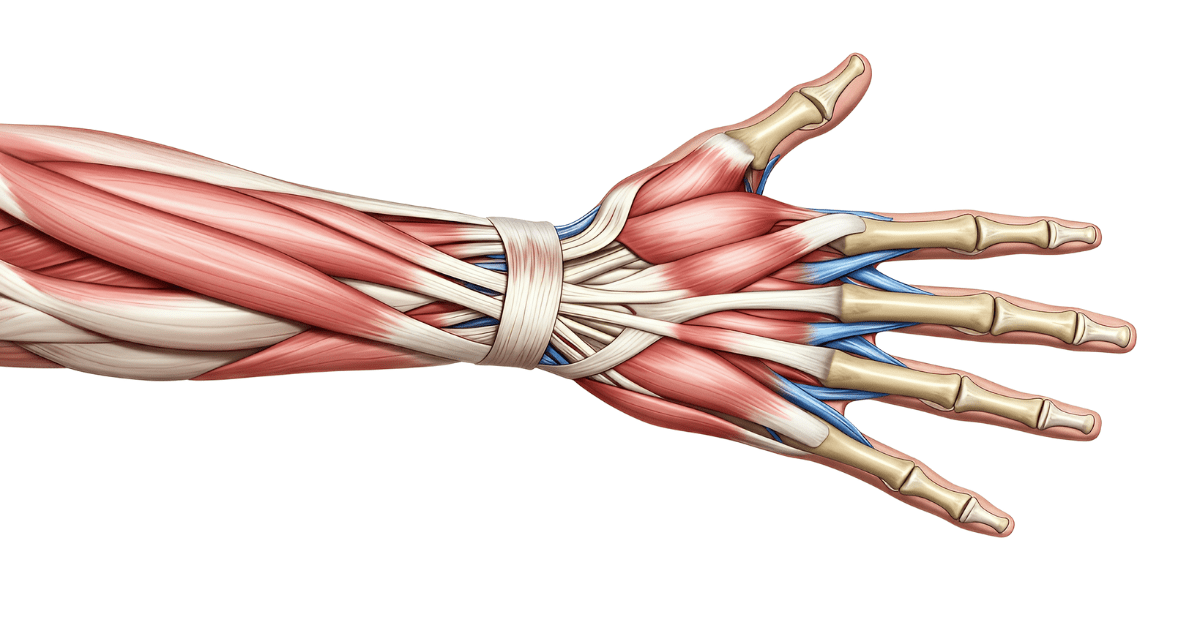What are Extensor Tendon Lacerations?
What Causes Extensor Tendon Lacerations?
Extensor tendon lacerations are typically the result of direct trauma to the back of the hand or fingers, where these tendons lie just beneath the skin. Because they are so close to the surface, extensor tendons are more vulnerable to injury than deeper structures. Damage can occur through both sharp, penetrating wounds and crush injuries. These injuries often happen during everyday activities—such as handling tools, cooking, or cleaning up broken glass—as well as during occupational tasks or sports. Injuries may be immediately apparent due to open wounds, bleeding, or difficulty straightening the fingers. However, in some cases, tendon damage may be masked by swelling or occur without an obvious external cut.
Common patterns of extensor tendon injury include:
These types of injuries not only impair function but can also cause long-term deformity if not treated appropriately. Early recognition and timely treatment are critical to restoring finger extension and preventing complications. If you or someone you know experiences difficulty straightening a finger after an injury—especially in the presence of a cut—it’s important to seek prompt evaluation by a hand specialist like Brandon P. Donnelly, MD.

Anatomy & Risk Factors
Extensor tendons are strong, fibrous cords that run along the back of the hand and fingers. They connect the forearm muscles to the bones in the fingers and thumb, allowing you to straighten your fingers, extend your wrist, and perform coordinated hand movements. Because these tendons lie just beneath the skin with minimal protective padding, they are particularly susceptible to cuts and trauma. Injuries to the extensor tendons can significantly impair hand function and limit daily activities, making understanding risk factors and early detection essential.
You may be at increased risk of extensor tendon lacerations if you:
Understanding these risk factors can help prevent tendon injuries or ensure that they’re treated before becoming more serious. If you're in a high-risk group or begin experiencing pain, weakness, or difficulty straightening your fingers, don’t delay care. Early evaluation by a hand specialist can make a significant difference in your recovery and long-term function.
How are Extensor Tendon Lacerations Diagnosed?
Extensor tendon lacerations should always be evaluated promptly by a hand specialist, especially when the injury results in difficulty or inability to extend one or more fingers. Diagnosis typically begins with a detailed history of the injury, including how and when it occurred, as well as any immediate symptoms experienced—such as loss of motion, pain, or visible deformity. During the physical examination, the provider will assess active and passive range of motion in the fingers and wrist, inspect the wound, and check for signs of tendon retraction or nerve involvement.
While many extensor tendon injuries can be diagnosed through clinical examination alone, imaging studies are often used to gather more information. X-rays may be ordered to rule out associated bone fractures or detect foreign objects, such as shards of glass or metal, within the wound. In cases where the extent of tendon damage is unclear, advanced imaging techniques like MRI or diagnostic ultrasound can help visualize the soft tissue structures in greater detail. These tools aid in confirming the diagnosis and in planning the most appropriate treatment approach.
Treatment Options
Non Surgical
Surgical
Recovery Time & Prognosis
Recovery from an extensor tendon laceration depends on the severity of the injury, the timeliness of treatment, and patient adherence to post-operative care. In most cases, patients who undergo surgical repair can expect to wear a protective splint or cast for approximately six weeks to protect the repaired tendon and promote proper healing. Full recovery—including regaining strength, flexibility, and range of motion—typically takes around three months, although some patients may require longer rehabilitation, particularly if the injury was complex or involved additional structures in the hand.
Early intervention and guided therapy are essential to achieving the best possible outcome. Patients who follow their post-surgical instructions and participate in occupational or physical therapy tend to recover more function and experience fewer long-term complications. Left untreated, however, extensor tendon injuries can lead to permanent deformity, stiffness, or loss of motion.
If you’ve experienced a hand or finger injury that’s impacting your ability to move or extend your digits, don’t wait. Contact Dr. Donnelly, to schedule a consultation with a board-certified orthopedic hand specialist. Prompt evaluation and treatment can significantly improve your recovery and reduce the risk of long-term impairment.
About Dr. Brandon P. Donnelly, MD
 Dr. Brandon P. Donnelly is a board certified hand, wrist, and elbow specialist with Pontchartrain Orthopedics & Sports Medicine. Dr. Donnelly completed his hand and microsurgery fellowship at the prestigious Philadelphia Hand to Shoulder Center. Dr. Donnelly treats all ages of patients in clinics in Metairie, Louisiana and Boutte, Louisiana.
Dr. Brandon P. Donnelly is a board certified hand, wrist, and elbow specialist with Pontchartrain Orthopedics & Sports Medicine. Dr. Donnelly completed his hand and microsurgery fellowship at the prestigious Philadelphia Hand to Shoulder Center. Dr. Donnelly treats all ages of patients in clinics in Metairie, Louisiana and Boutte, Louisiana.
This site is not intended to and does not provide medical advice, professional diagnosis, opinion, treatment or services to you or to any other individual. Through this website and links to other websites, Brandon P. Donnelly, MD provides general information for educational purposes only. The content provided in this website and links, is not a substitute for medical care or treatment. You should not use this information in place of a consultation or the advice of your healthcare provider. Brandon P. Donnelly, MD is not liable or responsible for any advice, course of treatment, diagnosis or any other information, services or product you obtain through this site.

